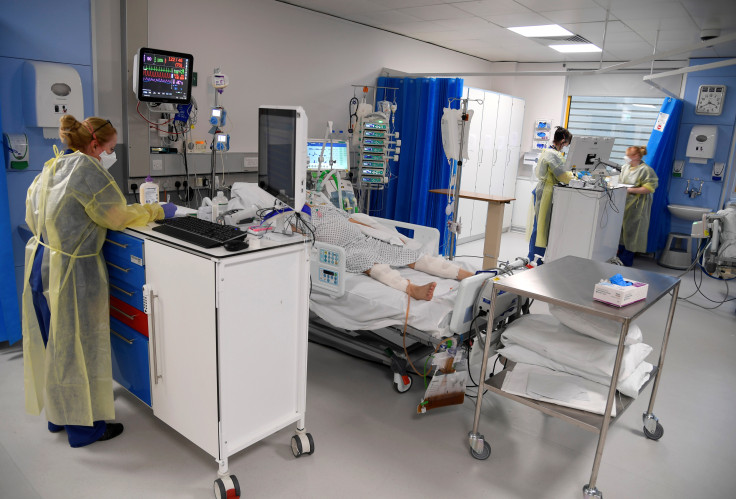Business Intelligence reporting platforms helps the NHS to reduce A&E waiting times
Richard Hartill of Northdoor has highlighted how things can be improved with better business intelligence strategies like accurate data which reduced waiting times for patients.

Recent reports suggest ways of tackling the rush of accidents and emergency deaths by the NHS. As per reports, a 20 per cent increase in year-on-year deaths in the accident and emergency segments in the UK.
This has posed a valid question regarding the efficiency of the system and how the NHS can minimise these deaths by improving the intake of such patients.
These FoI stats are stark reading for everyone. With the combination of added pressure on accident & emergency departments and NHS staff because of Covid-19, a shortage of resource(s) and more patients than ever coming through departments, it is perhaps not surprising that waiting times are increasing with the consequences that, that brings.
Richard Hartill of Northdoor has highlighted how things can be improved with better business intelligence strategies like accurate data which reduced waiting times for patients. He pointed towards some NHS trusts who are already doing this with the help of IT companies.
Why is it needed?
As per a Freedom of Information (FoI) request the accident and emergency death toll in England touched 23000 or more last year. It's 20 per cent more than what it was in 2021 which highlights the plight of the NHS and how the patient waiting times have increased.
Although the government has underlined a standard four-hour waiting time, the situation is worse than that as the country was struggling with fewer hospitals and medical staff, especially due to the COVID-19 pandemic. In such a situation the emergency departments were really struggling to get to the patients which had an adverse effect on the patients.
With hundreds of patients coming into the department each day, the ability to manage this level of demand and adhere to the four-hour standard is extremely difficult when the data being received by these teams is old and possibly inaccurate.
Increased information sharing is the key
One way to manoeuvre through this logjam is to use data accurately and share them with each other through business intelligence (BI) reporting solutions. Most hospitals know that data can help in lowering the patient waiting times but they don't have the means to access and share that data in time.
In such a scenario these business intelligence reporting solutions that enable people to share information through digital transformation projects are important. So, this is the revolution waiting to happen in the healthcare sector.
BI platforms help in timely and accurate reporting to clinical, operational and managerial teams. Information is shared in real-time, making way for faster decision-making and action-taking that reduces patient waiting times. While some NHS Trusts have started doing this most hospitals are still following the long tedious manual process of data correction which is adding to the patient waiting times.
What does this mean?
Hartill underlined how these Business Intelligence reporting platforms worked. With these systems in place, one can get real-time statistics presented in the form of dashboards on the monitor of the respective departments in the hospitals. They are automated and constantly upgraded on the go, minimising any delay and inaccuracy in reporting.
So, the staff at the hospitals are now well equipped with the necessary information and can easily manage the patients and the resources and monitor the situation, maintaining a steady patient flow. This reduces patient waiting times and keeps them within their target.
How economical is this?
Such a transformation will require substantial investment as it is likely to be expensive, as many would think.
Well, BI reporting solution comes with the necessary costs of transferring things from manual paper-reliant processes to Excel spreadsheets but that could be overcome by using NHS Digital shared services to partner with local healthcare solution providers for affordable services.
Forward-thinking NHS organisations are embracing the shared services directive from NHS Digital and are working with local healthcare partners to share the use and cost of the system which is providing those organisations access to enterprise-level technology solutions that they previously might not have been able to afford.
A growing number of NHS poor performance headlines and the pressure to hit the patient targets is burdening an already overworked and understaffed NHS which is suffering from a funding shortage and plagued by demographic shifts. In such circumstances, this seems to be the need of the hour.
NHS trusts partnering with IT companies
NHS trusts have an impossible task to tackle, knowing fully well that things could be improved with adequate data available with the different departments.
So, these NHS trusts are trying to minimise the costs and increase the NHS emergency waiting times by employing the services of external IT firms and healthcare partners who supply them with BI reporting platforms and economic support to make this transformation possible. They provide access to real-time data and also the opportunity to share the costs.
This has reduced patient waiting times and well-informed decisions are taken in a more timely manner, making them able to provide better care.
© Copyright IBTimes 2025. All rights reserved.






















